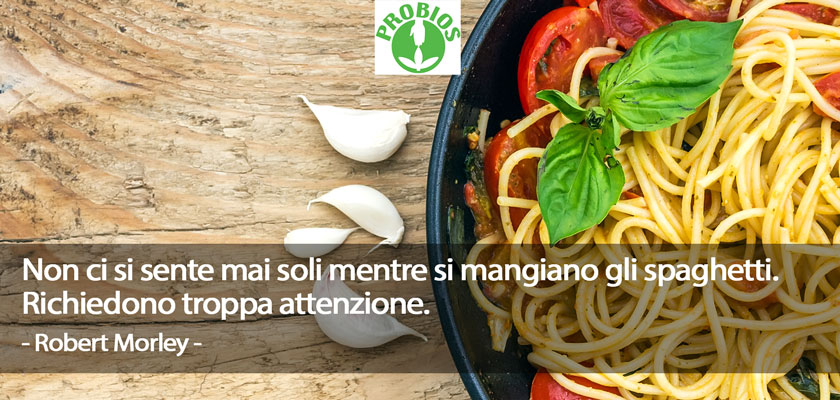
Marinetti says stop
To be bound might be pasta.
Than we see Marinetti
That devours some spaghetti.
(Filippo Tommaso Marinetti, repudiating what he said about spaghetti 6 months earlier)
Eighteen years ago the first edition of the World Pasta Day in Naples took place and established the 25th of October as the day to celebrate this food, the symbol of the Mediterranean diet. Since then, Aidepi (Association of Italian sweet and pasta industries) says, its production increased by almost 57%, from 9,1 to 14,3 million tons. 48 Countries (+77%) produce this product consistently (more than 1.000 tons) and 52 (30 years ago, they were 30) countries consume at least 1kg pasta per capita each year.
The 2017 edition of World Pasta Day takes place in Sao Paulo, Brasil, and has been organized by ABIMAPI (the Brasilian association of industrial biscuit, pasta, bread and bakery producers), with the help of IPO (International Pasta Organization).
The World Pasta Day has the goal to celebrate pasta and share its precious nutritional values to the press and the consumers, explaining how this global food, which is nowadays consumed worldwide, is capable to satisfy not only the primary dietary needs, but also to evaluate the highest culinary researches and experimentations. A proof of the growing passion for pasta is also the diffusion of news, recipes, tutorials and pictures about it. In 2016, two scientific researches have been shares on social media all over the world: an Italian research debunked in fact the myth that pasta makes you fat, and some American researchers also discovered the existence of the typical flavor of the pasta, the so-called “starchy”, associated to the flavor of carbohydrates.
The proof of the revamping of pasta also comes from Google: according the Food Trend Reports of March 2016, in Italy, Turkey, Japan, Scandinavia, Poland, Germany, Australia and Canada, pasta has been googled a lot more times in comparison to meat, rice, vegetables and fruit. Moreover, pasta is ranked among the first 5 food trends (+26% in comparison to the previous research) in the USA, the land of protein-based diets and “carbophobia”.
A real comeback of pasta, but with a higher attention to the quality of the raw material used and to the flavors of tradition. That’s the reason why Probios decided to bring back to our tables the authentic flavor of the Sicilian Ancient Grains.
The new Probios Ancient Grains range is produced with ancient Sicilian wheat varieties (Margherito, Perciasacchi, Russello, Timilia and Maiorca), rediscovered thanks to the help of the “grain keepers”, farmers involved into their safeguard. Their production chain is controlled in every part: the cultivation takes place in the fertile lands of south-eastern Sicily, in farms that tenaciously still cultivate these local wheat varieties, maintaining the biodiversity of the territory. The storage takes place in the so-called “Grain Graves”, dry and airy places that maintain the properties of the raw materials, as the Egyptians used to do. The grains are then ground with a monolithic stone mill, an ancient technique that has been now revamped thanks to the advanced technologies to guarantee high quality controls and standards.
From the precious Miscuglio flour, made by blending the different Sicilian varieties, comes Probios’ pasta, which is bronze wire-drawn and dehydrated at low temperatures. With its high porosity, it's available both white and whole wheat and in different shapes (spaghetti, fusilli, penne, rigatoni, stelline and conchiglie).





